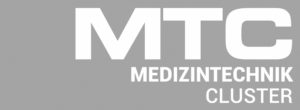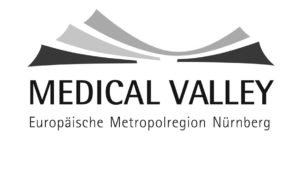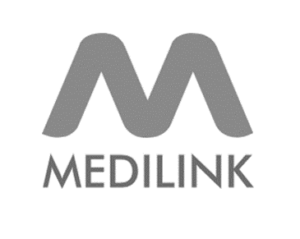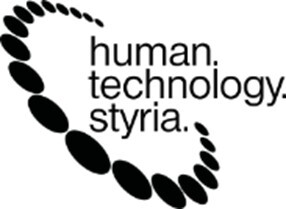The integration of Artificial Intelligence (AI) into medical imaging has guided in an era of transformation in healthcare.
The innovation segment explores cutting-edge developments in AI, such as deep learning algorithms, convolutional neural networks, and generative adversarial networks, which have significantly improved the accuracy and efficiency of medical image analysis.
Advancements in medical imaging and artificial intelligence (AI) have ushered in a new era of possibilities in the field of healthcare. The fusion of these two domains has revolutionized various aspects of medical practice, ranging from early disease detection and accurate diagnosis to personalized treatment planning and improved patient outcomes.
Medical imaging techniques such as computed tomography (CT), magnetic resonance imaging (MRI), and positron emission tomography (PET) play a pivotal role in providing clinicians with detailed and comprehensive visual information about the human body. These imaging modalities generate vast amounts of data that require efficient analysis and interpretation, and this is where AI steps in.
Technological Innovations
Mathematical models and algorithms stand at the forefront of scientific exploration, serving as powerful tools that enable us to unravel complex phenomena, make predictions, and uncover hidden patterns in vast datasets. These essential components of modern research have not only revolutionized our understanding of the natural world but have also played a pivotal role in driving technological breakthroughs that open up numerous application possibilities across various domains.
The synergy between mathematical models and algorithms has not only enhanced our understanding of the world but has also been a driving force behind technological advancements that have transformed our daily lives.
Transformers
Convolutional Neural Networks (CNNs) are well suited for grid-like data, such as images, where local patterns can be captured efficiently. However, they struggle with sequential data because they lack a mechanism for modeling dependencies between distant elements (for example, in distinct time instants or far in the image).
Also, CNNs do not inherently model the position or order of elements within the data. They rely on shared weight filters, which makes them translation invariant but can be problematic when absolute spatial relationships are important.
Generative Models
Generative models are a class of machine learning models that can generate new data based on training data. Other generative models include generative adversarial networks (GANs), variational autoencoders (VAEs), and flow-based models. Each can produce high-quality images.
Deep Learning Techniques and Performance Optimization
Medical imaging techniques are based on different physical principles, each with their benefits and limitations. The ability to deal with such diverse modalities is also an important aspect to be addressed by AI.
Applications
AI-based imaging techniques can be divided in eight distinct categories: acquisition, preprocessing, feature extraction, registration, classification, object localization, segmentation, and visualization. These can also be organized in the clinical process pipeline broadly encompassing prevention, diagnostics, planning, therapy, prognostic, and monitoring. It is also possible to focus on the human organ or physiological process under focus.
Medical Image Analysis for Disease Detection and Diagnosis
Medical image analysis for disease detection and diagnosis is a rapidly evolving field that holds immense potential for improving healthcare outcomes. By harnessing advanced computational techniques and machine learning algorithms, medical professionals are now able to extract invaluable insights from various medical imaging modalities.
Artificial intelligence is an area where great progress has been observed, and the number of techniques applicable to medical image processing has been increasing significantly. In this context of diversity, review articles where different techniques are presented and compared are useful.
The role of AI in facilitating the analysis of large-scale retinal datasets and the development of computer-aided diagnostic systems is also highlighted.
However, AI is not always a perfect solution, and the challenges and limitations of AI-based approaches are also covered, addressing issues related to data availability, model interpretability, and regulatory considerations.
Imaging and Modeling Techniques for Surgical Planning and Intervention
Imaging and 3D modeling techniques, coupled with the power of artificial intelligence (AI), have revolutionized the field of surgical planning and intervention, offering numerous advantages to both patients and healthcare professionals.
By leveraging the capabilities of AI, medical imaging data, such as CT scans and MRI images, can be transformed into detailed three-dimensional models that provide an enhanced understanding of a patient’s anatomy. This newfound precision and depth of information allow surgeons to plan complex procedures with greater accuracy, improving patient outcomes and minimizing risks and AI-powered algorithms can analyse vast amounts of medical data, assisting surgeons in real-time during procedures, guiding them with valuable insights, and enabling personalized surgical interventions.
Image and Model Enhancement for Improved Analysis
Decision-making and diagnosis are important purposes for clinical applications, but AI can also play an important role in other applications of the clinical process.
In complex healthcare scenarios, it is crucial for clinicians and practitioners to understand the reasoning behind AI models’ predictions and recommendations.
Medical images often suffer from noise, artifacts, and limited resolution due to the physical constraints of the imaging devices. Therefore, developing effective and efficient methods for medical image super-resolution is a challenging and promising research topic, searching to obtain previously unachievable details and resolution.
Medical Imaging Datasets
Numerous advancements outlined above have arisen through machine learning public challenges. These initiatives provided supporting materials in the form of datasets (which are often expensive and time consuming to collect) and, at times, baseline algorithms, contributing to the facilitation of various research studies aimed at the development and evaluation of novel algorithms.
Conclusions
Cutting-edge techniques that push the limits of current knowledge have been covered in this editorial. For those focused on the AI aspects of technology, evolutions have been reported in all stages of the medical imaging machine learning pipeline.
The field of medical imaging and AI is evolving rapidly, driven by ongoing research and technological advancements. Researchers are continuously exploring novel algorithms, architectures, and methodologies to further enhance the capabilities of AI in medical imaging. Additionally, collaborations between clinicians, computer scientists, and industry professionals are vital in translating research findings into practical applications that can benefit patients worldwide.
By combining cutting-edge AI techniques and their practical applications, it is clear that AI will continue shaping the future of healthcare in profound and positive ways.
Here the link to the full article in Bioengineering (Basel) from Luís Pinto-Coelho












